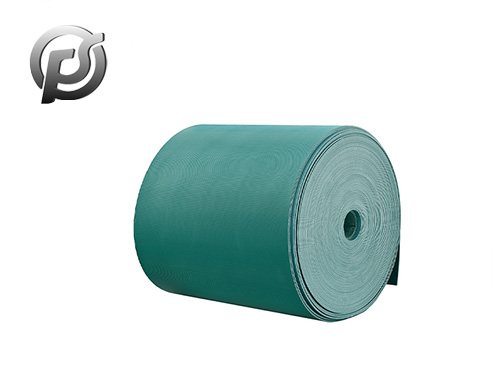In industrial activities, we often need climbing zones that can be transported on slopes. Besides the weeding conveyor belt, the conveyor belt with baffle can also meet the demand. How to solve the use of baffle conveyor belt caused by abnormal or broken?
1. The base belt side (blank side) of the baffle conveyor belt is damaged.
If the edge of the conveyor belt is only slightly damaged and broken, it is necessary to observe whether the conveyor belt runs off course or is damaged by external forces during operation. If the torn edge position is empty, the observation of conveyor line roller for double, in principle, the bandwidth is greater than 500 mm above do not use a single pressure belt wheel, wheel pressure on the major role in the conveyor belt slot, in order to prevent the conveyor belt, ribbon, if the baseband wide, adopt and pulley, stress points on the empty side of the baseband, if thickness slants thin, easy to tear and damage, if you use a compound, In the process of operation, the inner wheel is just pressed on the top of the group edge, so that the force point is even and there will be no tear at the empty edge position.
2, baffle conveyor skirt and partition are torn off.
The field should observe whether the conveyor belt runs smoothly, whether the conveyor belt is derailed, whether it matches the effective bandwidth and the pressure wheel, whether the diameter of the drum conforms to the specified parameters, the operation of the conveyor belt in the return journey, whether the baffle has ripples in the return journey, and the stiffness of the base belt itself. On the return trip, if there are fluctuations, it is easy to damage the baffle. If the baffle is hard, it can easily snap off the bottom.
3. The base belt of the conveyor belt of the separator is broken.
It is necessary to observe whether the diameter of the roller is too small and whether the bending stress of the conveyor belt is too large to cause fracture. Observe the non-working surface of the baseband to see if there is any obvious trace at the base of the partition. If it is too obvious, it indicates that the pressure of the secondary vulcanization separator is too large, causing damage to the conveyor belt position. Or there is no cleaning device on the conveyor line, resulting in scratches on hard objects, resulting in section.
 Optimizing Operations with PE Conveyor Belts: Durability, Efficiency, and Versatility
Optimizing Operations with PE Conveyor Belts: Durability, Efficiency, and Versatility
 Exploring the Efficiency and Versatility of Light Conveyor Belts
Exploring the Efficiency and Versatility of Light Conveyor Belts
 Polyester Conveyor Belts: Enhancing Efficiency and Reliability in Material Handling
Polyester Conveyor Belts: Enhancing Efficiency and Reliability in Material Handling